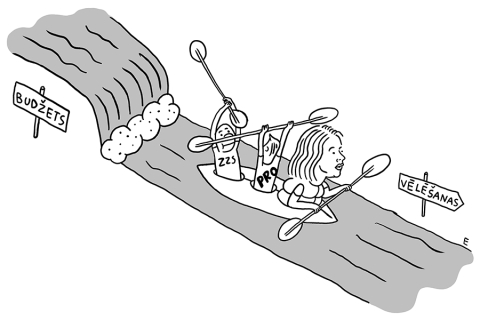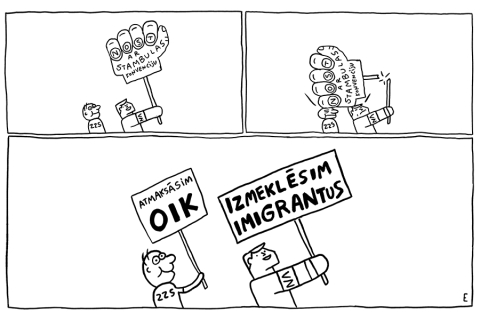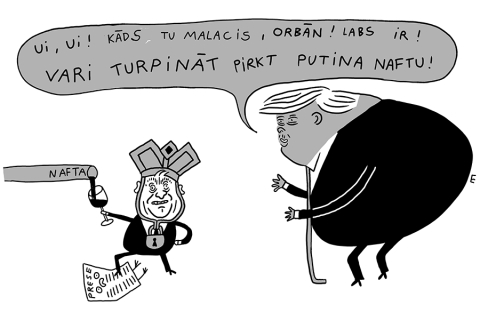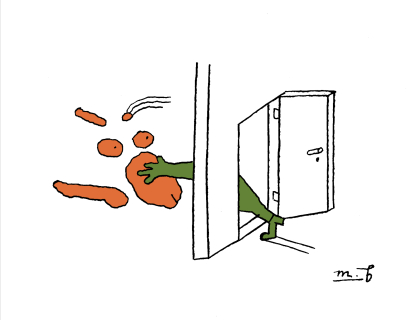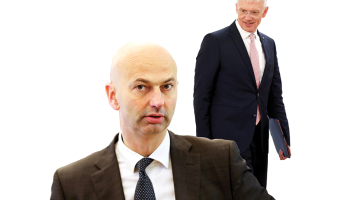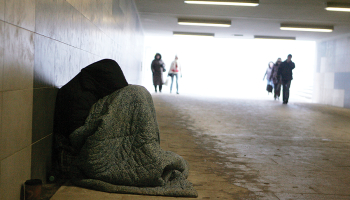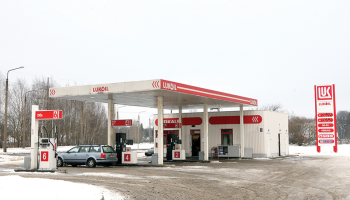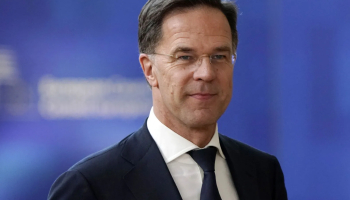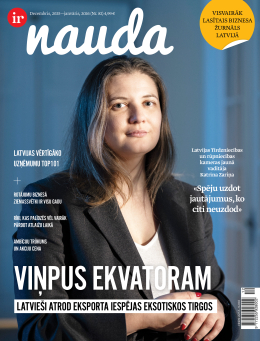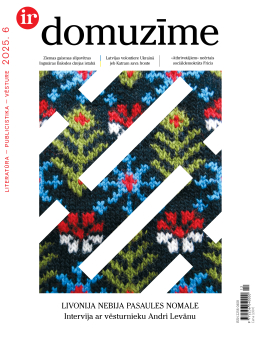Žurnāls Ir | Svarīgākais politikā, ekonomikā un kultūrā
Jaunākie raksti


Kā students Emīls izglāba kolēģa dzīvību?
Emīls (24) kopā ar citiem studiju biedriem tikko bija noskatījies jauno vokālistu koncertu un, sēžot dīvānos starp Mūzikas akadēmijas otro un trešo stāvu, apsprieda redzēto. Pēkšņi sadzirdēja un tad ieraudzīja uz kāpnēm gulošo Renātu.
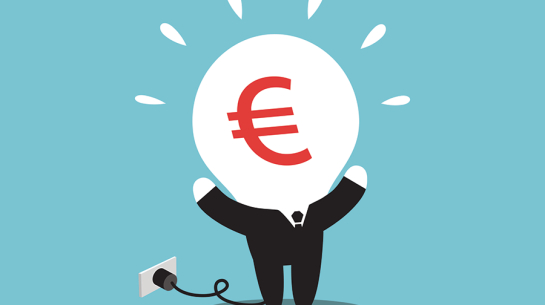
Jaunā izšķirtspēja
Elektrības tirdzniecība Nordpool biržā kopš oktobra notiek pa 15 minūšu intervāliem līdzšinējo 60 minūšu vietā. Kāpēc šādas izmaiņas bija nepieciešamas, un ko no tā iegūsim?

Vienojas par garantijām Ukrainai
Ekonomikai sola izaugsmi
Aukstuma vilnis pārņem Eiropu
Lasīt vairāk →Īsi par svarīgāko ik rītu — pieraksties jaunumu vēstulei Ir Svarīgākais!

Būt patiesam, nevis pareizam – intervija ar teologu Induli Paiču
Ir labi, ka garīgais gads sākas neilgi pirms Jaunā gada, saka mācītājs un teologs Indulis Paičs (46). Viņš aicina atrast brīdi, lai ieklausītos sevī, jo adventes vēsts ir — ja gribi ārējas pārmaiņas, tām vispirms jāsākas tevī

Uzņēmējdarbības brīvība Latvijā 2026. gadā: galvenie riski un politikas virzieni
2026. gadā uzņēmējdarbības vidi Latvijā noteiks nevis viena strukturāla reforma, bet vairāku regulējuma iniciatīvu kopums dažādās nozarēs. Šīs iniciatīvas, kas bieži tiek pamatotas ar sabiedrības interesēm, kopumā sašaurina uzņēmēju rīcības brīvību un palielina izmaksas, lai izpildītu jaunās politiķu prasības.

Kāpēc īpašumus apdrošinām vismazāk Baltijā un ko tas mums maksā?
Nekustamais īpašums ir viena no finansiāli nozīmīgākajām investīcijām. Nereti ilgstoši plānota, finansiāli un arī emocionāli dārga. Privātajā sektorā – daudzu ģimeņu vienīgā mājvieta, savukārt uzņēmumiem – ne tikai pamatlīdzeklis, bet arī to veiksmīgas darbības asinsrite. Tāpēc interesants šķiet fakts, ka Latvijā apdrošināti tiek vien ap 50 % nekustamo īpašumu, tai pat laikā Igaunijā aptuveni 80 %, bet Lietuvā 60 – 70 %.
Raidieraksti
Karikatūra
Pētījumi
Bizness un ekonomika

Zaļenieku kokaudzētavas biznesa veiksmes stāsts
Latgales puika Imants Parfenovičs sapņoja par mūziķa karjeru, taču dzīve aiznesa uz otru Latvijas malu un pavisam citu profesiju. Pirms 30 gadiem veidoto uzņēmumu dārznieks vada vēl 73 gadu vecumā

Gudrāki logi – uzņēmuma i2 biznesa veiksmes stāsts
Krista Slokenberga ģimenes uzņēmums i2 ražo logus, vienus no energoefektīvākajiem, kādi pieejami tirgū un kurus novērtē arī dizaina dēļ. Pirms to iemācījās, viņš divreiz bankrotēja

Nāve nav beigas
Kapu kopšanas tradīciju latvieši pārmanto no paaudzes paaudzē, tomēr tradicionālā apbedīšana ir smaga gan dabai, gan tuviniekiem. Kad uzņēmuma Turn Urn dibinātāja Līva Elksne īsā laikā piedzīvoja divu tuvinieku aiziešanu, viņa nolēma to mainīt
Viedokļi
Personības
Eiropā
Recenzijas
Populārākie raksti

Trampa jaunā pasaule
ASV valdība ir paziņojusi mērķi pārdalīt globālās ietekmes sfēras

Nošāva draugu un tad sevi. Kas atklāts zēnu nāves lietā Pļavniekos?
Februārī kādā dzīvoklī Pļavniekos atrada divus mirušus zēnus ar šautām brūcēm galvā. Izmeklēšanā šī traģēdija atzīta par rotaļas laikā notikušu nejaušību. Upura ģimene pirmo reizi atklāti runā un apšauba izmeklēšanas rezultātus

Salacgrīvā suņi uzbrūk medmāsai – Ilzei vairākas operācijas, dzīvnieki joprojām savā vaļā
Divi suņi novembrī Salacgrīvā stipri sakoda medmāsu Ilzi, kura bija ieradusies pie pacientes. Viņai veiktas četras smagas operācijas, tikmēr suņi joprojām staigā brīvā vaļā, ierobežoti tikai ar elektrosētu

Pusmiljons eiro drošības naudai! Atbrīvo pusmiljarda atmazgāšanā apsūdzēto Elmāru Laizānu
Pusmiljarda eiro atmazgāšanas lietā apsūdzētais uzņēmējs Elmārs Laizāns atbrīvots no apcietinājuma. Drošības naudas apmērs — pusmiljons eiro

Ārpus rāmjiem. Kā tapa godalgotais koka bērnudārzs Salaspilī?
Koka bērnudārzs Salaspilī tapa par spīti noteikumiem, kas neļāva tādu būvēt. Šogad tas saņēma Latvijas Arhitektūras gada balvu

Vanadziņa māja Cēsīs – sapnis par viesnīcu un restorānu
Pirms septiņiem gadiem Cēsu vecpilsētas sirdī no gruvešiem atdzima leģendārā Vanadziņa māja, kurā jauni latviešu uzņēmēji cerēja piepildīt sapni par savu restorānu un viesnīciņu. Šoruden restorāns H. E. Vanadziņš pirmo reizi ieguva prestižo Michelin Bib Gourmand apbalvojumu

Izspiest sevi līdz pēdējam. Saruna ar pasaulslaveno soprānu Marinu Rebeku
Pirms dažām nedēļām pasaulslavenais soprāns Marina Rebeka (45) saņēma Starptautisko Operas balvu, ko dēvē par operas pasaules Oskaru. «Skaistākais ir tas, ka balvu nepiešķīra žūrija, tā bija publikas izvēle,» saka operdziedātāja


